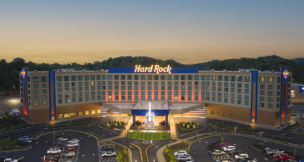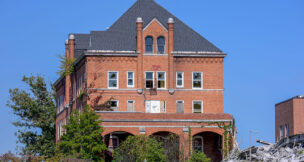Education 2023: LT. GEN. DARRELL K. WILLIAMS (U.S. ARMY, RET.)
When Williams was a freshman at Hampton University in 1979, the school’s president was William R. Harvey — who retired last year after 44 years leading the private historically Black university. That’s a tough act to follow, but Williams, who became HU’s 13th president in July 2022, has an impressive résumé of his own. A […]
Education 2023: KATHERINE A. ROWE
In 2018, Rowe took the helm of the nation’s second-oldest university, William & Mary, bringing with her a diverse educational background that includes degrees in literature, graduate work in cinema and media studies, and 16 years as an English professor and department chair at Bryn Mawr College in Pennsylvania. A Shakespearean scholar, she also co-founded […]
Education 2023: TIMOTHY SANDS
Known among Hokies as “the Sandsman” — a nod to the Hokies’ football anthem, Metallica’s “Enter the Sandman” — Sands joined Virginia Tech in 2014 after serving as interim president at Purdue University. Sands signed a contract in August 2022 to stay on as president through the 2027 academic year. During his tenure, Sands has […]
Education 2023: DONNA PRICE HENRY
Henry is making history at the University of Virginia’s College at Wise — the school’s first female chancellor, she created the school’s first office devoted to equity, diversity and inclusion. And in 2019 she made technology accessible for every student by instituting a program to grant every incoming freshman an iPad. In June, she was honored […]
Education 2023: JAMES E. RYAN
Ryan, who became the University of Virginia’s ninth president in 2018, has spearheaded several growth initiatives at the state’s flagship university, including the School of Data Science, a new performing arts center and the Karsh Institute of Democracy — all projects funded by donors, including a record 2019 gift of $120 million from alumni couple […]
Education 2023: DAVID DORÉ
A newcomer to Virginia, Doré arrived in April as the Virginia Community College System’s new chancellor. It was quite the jump in scale from Doré’s previous role as president of campuses and executive vice chancellor for student experience and workforce development at Tucson, Arizona-based Pima Community College, which serves about 30,000 students. At VCCS, he […]
Education 2023: MAJ. GEN. CEDRIC T. WINS (U.S. ARMY, RET.)
A 34-year U.S. Army veteran and 1985 VMI alumnus, Wins became the first Black superintendent to lead “the West Point of the South,” the nation’s oldest state military college, following the resignation of his predecessor in 2020. Wins joined at a time when VMI, known for its demanding “Rat Line” boot camp, was the subject […]
Education 2023: LANCE R. COLLINS
Collins came to Virginia from Cornell University in 2020 to build Virginia Tech‘s Innovation Campus in Alexandria, a $1 billion development that will educate computer science and engineering students within a stone’s throw of Amazon’s $2.5 billion-plus HQ2 East Coast headquarters in Arlington. Slated to open in 2024, the Innovation Campus was a key part […]
Education 2023: PETER BLAKE
Blake will leave quite a legacy when he steps down from his role as director of the State Council of Higher Education for Virginia at the end of the year. SCHEV is establishing a search committee for his replacement and will work with the state education secretary’s office and others. During Blake’s 11 years at […]
2023 Virginia 500: Education
Makola M. Abdullah PRESIDENT, VIRGINIA STATE UNIVERSITY, ETTRICK Javaune Adams-Gaston PRESIDENT, NORFOLK STATE UNIVERSITY, NORFOLK Jonathan R. Alger PRESIDENT, JAMES MADISON UNIVERSITY, HARRISONBURG Peter Blake DIRECTOR, STATE COUNCIL OF HIGHER EDUCATION FOR VIRGINIA, RICHMOND Lance R. Collins VICE PRESIDENT AND EXECUTIVE DIRECTOR, VIRGINIA TECH INNOVA[...]
Education 2023: MICHAEL RAO
In his 14th year at VCU, Rao has had a year of ups and downs. VCU opened its $125 million STEM building in April, and in May it announced an $18 million donation from Washington, D.C.-based real estate analytics company CoStar Group to build an academic building for arts and innovation. However, VCU Health made […]
Education 2023: JAVAUNE ADAMS-GASTON
Rising in prominence since Adams-Gaston became its leader in 2019, Norfolk State now ranks regularly in the top 20 historically Black colleges and universities, as ranked by U.S. News & World Report. In 2021, Norfolk State received its largest single-donor gift, $40 million from billionaire philanthropist MacKenzie Scott, ex-wife of Amazon.com founder Jeff Bezos. The […]






















